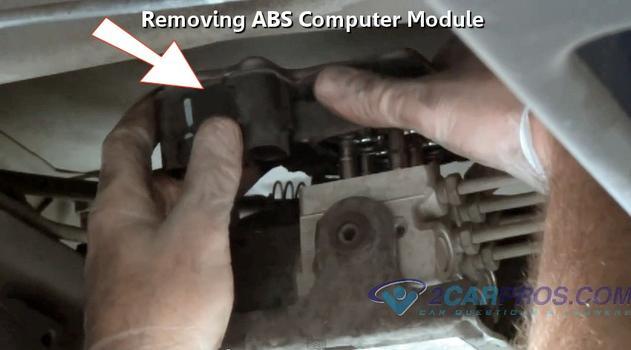Good morning.
If the ABS went dry then it needs to be bled. The basic system needs to be bled first before bleeding the ABS. You will need a scan tool to perform this procedure.
Roy
Anti-lock Brake System Automated Bleed Procedure:
Notice: When adding fluid to the brake master cylinder reservoir, use only Delco Supreme 11(R), GM P/N 12377967 (Canadian P/N 992667), or equivalent DOT-3 brake fluid from a clean, sealed brake fluid container. The use of any type of fluid other than the recommended type of brake fluid, may cause contamination which could result in damage to the internal rubber seals and/or rubber linings of hydraulic brake system components.
Notice: Refer to Brake Fluid Effects on Paint and Electrical Components Notice.
Important: The base hydraulic brake system must be bled before performing this automated bleeding procedure. If you have not yet performed the base hydraulic brake system bleeding procedure, refer to Hydraulic Brake System Bleeding (Manual) (See: Brake Bleeding > Procedures)Hydraulic Brake System Bleeding (Pressure) (See: Brake Bleeding > Procedures) before proceeding.
1. Install a scan tool to the vehicle.
2. Start the engine and allow the engine to idle.
3. Using the scan tool, begin the automated bleed procedure.
4. Follow the instructions on the scan tool to complete the automated bleed procedure. Apply the brake pedal when instructed by the scan tool.
5. Turn the ignition OFF.
6. Remove the scan tool from the vehicle.
7. Fill the brake master cylinder reservoir to the maximum-fill level with Delco Supreme 11(R), GM P/N 12377967 (Canadian P/N 992667), or equivalent DOT-3 brake fluid from a clean, sealed brake fluid container.
8. Bleed the hydraulic brake system. Refer to Hydraulic Brake System Bleeding (Manual) (See: Brake Bleeding > Procedures)Hydraulic Brake System Bleeding (Pressure) (See: Brake Bleeding > Procedures).
9. With the ignition OFF, apply the brakes 3-5 times, or until the brake pedal becomes firm, in order to deplete the brake booster power reserve.
10. Slowly depress and release the brake pedal. Observe the feel of the brake pedal.
11. If the brake pedal feels spongy, repeat the automated bleeding procedure. If the brake pedal still feels spongy after repeating the automated bleeding procedure inspect the brake system for external leaks. Refer to Brake System External Leak Inspection (See: Hydraulic System, Brakes > Component Tests and General Diagnostics).
12. Turn the ignition key ON, with the engine OFF. Check to see if the brake system warning lamp remains illuminated.
13. If the brake system warning lamp remains illuminated, DO NOT allow the vehicle to be driven until it is diagnosed and repaired. Refer to Symptoms - Hydraulic Brakes (See: Hydraulic System, Brakes > Symptom Related Diagnostic Procedures > Symptoms - Hydraulic Brakes).
14. Drive the vehicle to exceed 13 km/h (8 mph) to allow ABS initialization to occur. Observe brake pedal feel.
15. If the brake pedal feels spongy, repeat the automated bleeding procedure until a firm brake pedal is obtained.
Wednesday, April 4th, 2018 AT 3:49 AM


